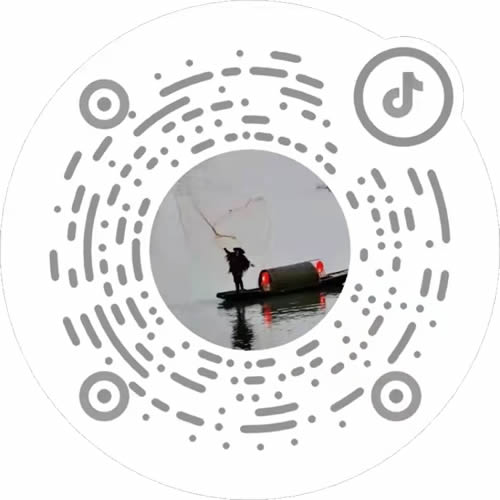高中英语教材中出现了不少“ It is ……”这样的句子。其中 it 表达的意义不同,“ It is ……”的含义也就不一样。本文在此将教材中出现过的这类句子罗列出来,供同学们学习时参考。
一 . It is time ( for sb. ) to do sth. 意为“该是某人做某事的时候了”。例如:
It's seven o'clock now. Mike, it is time ( for you ) to go to school.
7 点了。迈克,你该去上学了。
此句式的变异形式为: It is ( high ) time that sb did sth. 该句式表示“某人现在该做某事了”,从句中谓语动词常为过去式,说明现在应该做的事情。例如:
It's six o'clock. It is high time that we went home now.
6 点钟了。该是我们回家的时候了。
二 . It is … when …可用于下面两种场合:
1. when 是连词,引导时间状语从句,意为“……的时候已是几点钟”。例如:
It was eight o'clock in the morning when they went shopping.
当他们去买东西的时候已经是上午 8 点了。
2. when 是关系副词,引导定语从句,它本身在从句中作时间状语。例如:
It was July 10, 1992, when he graduated from Nanjing University.
他 1992 年 7 月 10 日毕业于南京大学。
三 . It is / has been + 一段时间 +since 从句。例如:
It is / has been three years since we saw each other last time.
我们上一次见面是在 3 年前。
It is four years since I became a student.
我上了 4 年学了。
(注意:状语从句中常用短暂性动词的一般过去时作谓语动词)
“ It was + 一段时间 +since 从句”结构。可理解为:从更远的过去某一时间点,延续了一段时间直至过去的一个时间点,从句中用过去完成时作谓语。例如:
It was two years since he had left here.
他离开这儿有两年了。
注意: since 从句里的谓语动词是瞬间动词时,表示这段时间从该动作开始时算起; since 从句里的谓语动词是延续性 / 表状态的动词时,则表示这段时间从动作结束时算起。例如:
It's five years since he lived here.
他离开这儿有 5 年了。( live 为延续性动词)
It's ten years since he joined the army.
他参军已有 10 年了。( join 为瞬间动词)
四 . It is + 一段时间 +before+ 从句。在该句式中, before 引导的是时间状语从句。这样的从句中通常用一般现在时表示将来时间。例如:
It will be hours before he arrives at the bus stop.
他到车站得好几个小时。
It was not five hours before Tom left for Shanghai.
不到五个小时汤姆就去上海了。
注意:常出现在 before 前面的词或短语有: long, not long, years, months, days, hours, minutes 等。其肯定式表示“过多久……就 / 才……”,否定式表示“不久……就 / 才……”。
五 . It is / was / will be + the first / second …… time + that 从句。该句式意为“这 / 那是第几次做……”。注意:如果主句谓语动词为一般现在时和一般将来时,则从句谓语动词为现在完成时;如果主句谓语动词的时态是一般过去时,则从句谓语动词的时态为过去完成时。例如:
It is the second time that I have been late for school.
这是我第二次上学迟到了。
It was the third time that I had been to Shanghai.
那是我第三次去上海了。
六 . 形式主语 it 可在下列情况下用来代替动词不定式:
1. It is + adj. ( +for sb. / sth. ) +to do sth. 常用于此句式的形容词有: easy, hard, difficult, possible, impossible, important, necessary, good, bad, exciting, interesting, surprising 等。例如:
It is easy for you to find the house.
你很容易找到那座房子。
2. It is +n. ( +for sb. / sth. ) + to do sth. 常用于此句式的名词有: pity, shame, pleasure, one's duty, one's job, fun, joy, good manners, bad manners 等。例如:
It is bad manners for the young to take up the seats for the old.
年轻人占有老年人的专用座位是不礼貌的。
3. It is + adj. + of sb. + to do sth. 此句式中的形容词主要用来描述某人的品德、特征。常用于该句式的形容词有: kind, nice, wise, silly, polite, impolite, friendly, foolish, clever 等。例如:
How silly it was of you to give up such a good chance!
你放弃如此好的机会是多么的愚蠢呀!
4. It is up to sb. to do sth. 表示“……应由某人……”。例如:
It's up to you to decide whether to take the job or not.
是否接受这项工作由你来决定。
七 . 形式主语 it 可用来代替作真正主语的动名词短语。具体句式有:
It is + adj. / n. + doing sth. 常用于此句式中的形容词和名词有: no / little use, no / much good, useless 等。例如:
It is no use saying any more about it.
这种事情说得再多也没用。
八 . 形式主语 it 可用来代替作真正主语的名词性从句。具体句式为:
1. it 作形式主语,真正的主语是后面 that 引导的从句。例如:
It is said that Doctor Li has been sent to Guangdong to fight against SARS.
据说李医生已被派往广东去抗非典了。
注意:有时因为主句中谓语动词或表语形容词的需要,通常在 that 从句中用“( should ) + 动词原形”作谓语动词。例如:
( 1 ) It is suggested that we ( should ) get there on time.
有人建议我们应该准时到达那儿。
( 2 ) It is important that we ( should ) study English.
对于我们来说学习英语是很重要的。
2. it 作形式主语,真正的主语是后面 wh- 词引导的从句。例如:
It was clear enough what he meant.
他的意思相当清楚。
It is not very important whether he will come or not.
他是否来并不重要。(注意:此句中的 whether 不可用 if 来代替)。
九 . “ It is ……”用于强调句式中。具体结构为:
It is + 被强调部分 +that / who 从句。要注意:强调作主语用的人时可以用 who 或 that ,其它情况下一律用 that .被强调的部分通常是主语、宾语、时间状语和地点状语。例如:
It was under the bed that my brother hid the ball this morning.
今天早晨,是我兄弟把球藏在床下的。
It is I who / that am to go and look after the old man.
是我自己要去照料那位老人的。
It was Jack and Mary who / that met with a funny-looking man yesterday.
昨天杰克和玛丽遇见一个外表上长得很可笑的男人。
注意:
1. 强调句中的主语时,谓语动词要与被强调的主语保持人称和数的一致。例如:
It is I who / that am to blame for it.
2. 可
[1] [2] 下一页
以强调 because 引导的原因状语从句,但不能强调 as , since 引导的原因状语从句。例如:
It was because her mother was ill that she missed the important lecture that day.
是因为她母亲病了,那天她才没能听到那个重要的演讲。
3. 强调时间状语、地点状语时要用 that 而不能用 when 或 where .例如:
It was last spring that we planted these fruit trees.
我们是在去年春天栽的这些果树。
It was in a faraway mountain village that he learned a lot from the peasants.
他是在一个遥远的山村里向农民学到许多东西的。
4. 强调 not until 引导的时间状语时, that 后面分句中的主语、谓语不用倒装。试比较下面两例:
( 1 ) It is not until she took off her glass that I recognized she was a famous film star.
直到她摘下眼镜我才认出她是位著名影星。(强调句)
( 2 ) Not until she took off her glass did I recognize she was a famous film star.
直到她摘下眼镜我才认出她是位著名影星。(倒装句)
上一页 [1] [2]













